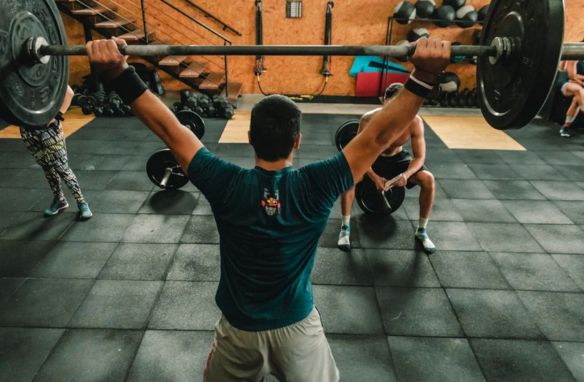Introduction When it comes to athletic performance, one of the most critical questions athletes face is whether to prioritize strength or endurance in their training. These two fitness components play vastly different roles, depending on the demands of the sport. While strength focuses on raw power and the ability to lift or exert force, endurance emphasizes stamina and the capacity to maintain effort over long durations. In this blog, we’ll break down the differences between strength and endurance, explore how they apply to various sports, and help you decide which training approach suits your sport best.
Understanding Strength Training

Strength training primarily focuses on building muscle power, force, and size. It involves exercises that challenge muscles with resistance, such as weightlifting, bodyweight movements, or resistance bands. Strength training leads to muscle hypertrophy, increased force production, and improved explosiveness.
- Key benefits of strength training:
- Increases muscle mass and power
- Enhances speed and agility in short bursts
- Improves bone density and joint health
- Boosts metabolism and overall body composition
- Sports that benefit from strength training:
- Weightlifting, Powerlifting, and Bodybuilding: These sports are inherently about strength, focusing on maximum force output in short, intense efforts.
- Football, Rugby, and Basketball: Athletes in these sports need to generate explosive power for sprints, tackles, and jumps.
- Combat Sports (MMA, Boxing, Wrestling): Strength is critical for strikes, grappling, and controlling opponents in close contact.
- Track and Field (Sprinting, Throwing Events): Events like the 100m sprint or shot put require athletes to maximize power and force in short timeframes.
Training Focus: Strength athletes typically engage in high-weight, low-rep sets (3-6 reps) to develop maximum force production. Exercises like squats, deadlifts, bench presses, and Olympic lifts are staples in strength programs.
Understanding Endurance Training

Endurance training focuses on the body’s ability to sustain effort over extended periods. It involves activities that improve cardiovascular fitness, muscular endurance, and the ability to maintain a consistent pace over time. This type of training enhances aerobic capacity, allowing athletes to work at sub-maximal intensities for longer durations.
- Key benefits of endurance training:
- Enhances cardiovascular health and lung capacity
- Improves the efficiency of energy use in muscles
- Reduces fatigue during prolonged activity
- Boosts mental toughness and stamina
- Sports that benefit from endurance training:
- Long-Distance Running, Cycling, and Swimming: Endurance athletes need to sustain energy for long periods and maintain optimal pace without excessive fatigue.
- Soccer and Basketball: Although strength is necessary, these sports also demand high levels of endurance, as players cover large distances over an entire game.
- Tennis: Matches can last for hours, requiring both stamina and the ability to recover quickly between points.
- Triathlon, Marathon, and Ironman Competitions: These multi-sport events require a combination of swimming, biking, and running, all demanding peak endurance.
Training Focus: Endurance athletes typically focus on low-weight, high-rep exercises (12-15+ reps) and cardio sessions like running, cycling, or swimming for long durations. Interval training, tempo runs, and circuit workouts help boost cardiovascular and muscular endurance.
Strength vs. Endurance: How They Differ

While strength and endurance share some common benefits, their impacts on athletic performance are quite distinct.
| Aspect | Strength | Endurance |
| Focus | Maximum force in short bursts | Sustained effort over long periods |
| Training Type | Weightlifting, resistance training | Cardiovascular exercises, high-rep workouts |
| Goal | Increase power, speed, and explosiveness | Increase stamina, recovery, and aerobic capacity |
| Muscle Fibers | Primarily fast-twitch (Type II) | Primarily slow-twitch (Type I) |
| Energy System | Anaerobic (quick energy bursts) | Aerobic (long-term energy production) |
Which Approach Suits Your Sport?

Choosing between strength and endurance training depends on the specific demands of your sport. Some sports require a balance of both, while others prioritize one over the other.
Strength-Dominant Sports
If your sport requires explosive power, rapid movements, or high levels of physical contact, strength training should be your primary focus. These sports often involve short bursts of intense activity where muscle power and force generation are critical.
- Examples:
- Football/Rugby: Tackling, sprinting, and blocking require brute strength.
- Powerlifting/Weightlifting: The entire focus is on lifting maximum weight in one or a few repetitions.
- Basketball: Jumping for rebounds, sprints, and explosive drives to the basket demand power.
- Sprinting: Explosive acceleration and speed are paramount in short-distance running events.
Endurance-Dominant Sports
For sports that involve continuous or extended physical activity, endurance training should be the priority. Here, the ability to sustain a high level of performance over time without significant fatigue is essential.
- Examples:
- Marathon Running: Requires the ability to pace over 26.2 miles while managing energy and recovery efficiently.
- Cycling and Triathlon: Athletes in these sports need to maintain stamina through long-distance events while staying mentally and physically sharp.
- Soccer: Players run for 90 minutes (or more), so cardiovascular endurance is critical.
- Swimming (long-distance): Long-distance swimmers need a high aerobic capacity to maintain speed over extended periods.
The Hybrid Approach: Balancing Strength and Endurance

Some sports require a hybrid approach where both strength and endurance are crucial to performance. In these cases, athletes must carefully balance their training to develop both components without sacrificing one for the other.
- Examples:
- Mixed Martial Arts (MMA): MMA fighters need explosive strength for striking and grappling, but they also require endurance to last through multiple rounds.
- Basketball and Soccer: Both sports require bursts of speed and power as well as the ability to maintain energy throughout long games.
- CrossFit: This sport blends strength and endurance through high-intensity, varied workouts that challenge both systems.
Hybrid Training Approach:
- Periodization: Structure your training into phases, alternating between strength and endurance focus. For example, during the off-season, you can build strength, then shift to endurance as your competition season approaches.
- Strength-Endurance Circuits: Combine strength exercises (like deadlifts or push-ups) with cardio intervals (like sprints or rowing) to build strength and endurance simultaneously.
Tailoring Your Training Plan

When designing your training plan, consider the specific demands of your sport and your personal goals. Here’s how you can tailor your plan:
- Identify Your Sport’s Needs: Does your sport involve quick, explosive actions or prolonged activity? Analyze whether strength, endurance, or both are critical.
- Set Goals: If you’re a power athlete, focus on building maximal strength through heavy lifting. If you’re an endurance athlete, work on improving aerobic capacity with long-duration cardio.
- Balance Recovery: Both strength and endurance training require proper recovery. Overtraining in either area can lead to burnout or injury, so make sure to incorporate rest days and active recovery.
- Monitor Progress: Track your improvements in both strength (through weight increases or reps) and endurance (through reduced fatigue or increased stamina).


